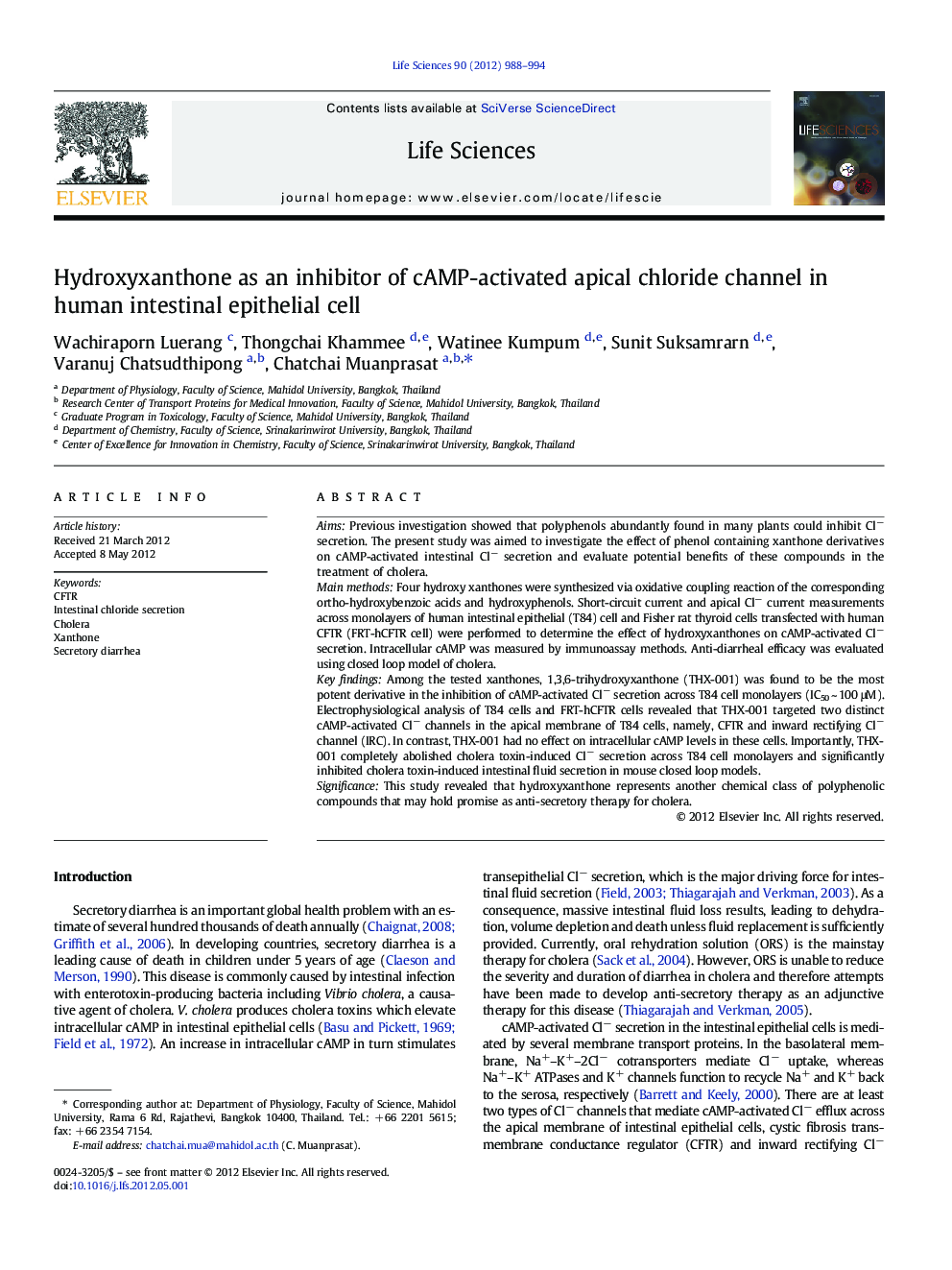| Article ID | Journal | Published Year | Pages | File Type |
|---|---|---|---|---|
| 2551604 | Life Sciences | 2012 | 7 Pages |
AimsPrevious investigation showed that polyphenols abundantly found in many plants could inhibit Cl− secretion. The present study was aimed to investigate the effect of phenol containing xanthone derivatives on cAMP-activated intestinal Cl− secretion and evaluate potential benefits of these compounds in the treatment of cholera.Main methodsFour hydroxy xanthones were synthesized via oxidative coupling reaction of the corresponding ortho-hydroxybenzoic acids and hydroxyphenols. Short-circuit current and apical Cl− current measurements across monolayers of human intestinal epithelial (T84) cell and Fisher rat thyroid cells transfected with human CFTR (FRT-hCFTR cell) were performed to determine the effect of hydroxyxanthones on cAMP-activated Cl− secretion. Intracellular cAMP was measured by immunoassay methods. Anti-diarrheal efficacy was evaluated using closed loop model of cholera.Key findingsAmong the tested xanthones, 1,3,6-trihydroxyxanthone (THX-001) was found to be the most potent derivative in the inhibition of cAMP-activated Cl− secretion across T84 cell monolayers (IC50 ~ 100 μM). Electrophysiological analysis of T84 cells and FRT-hCFTR cells revealed that THX-001 targeted two distinct cAMP-activated Cl− channels in the apical membrane of T84 cells, namely, CFTR and inward rectifying Cl− channel (IRC). In contrast, THX-001 had no effect on intracellular cAMP levels in these cells. Importantly, THX-001 completely abolished cholera toxin-induced Cl− secretion across T84 cell monolayers and significantly inhibited cholera toxin-induced intestinal fluid secretion in mouse closed loop models.SignificanceThis study revealed that hydroxyxanthone represents another chemical class of polyphenolic compounds that may hold promise as anti-secretory therapy for cholera.
